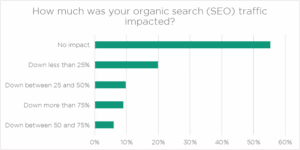 So, you’ve commissioned a new website and you have everything looking great, especially that really large and cool sliding image on the home page! But, you might notice that your website loads kinda slow. If you notice slow performance, chances are Google is ranking your website lower when compared to competitor websites with higher performing sites.
So, you’ve commissioned a new website and you have everything looking great, especially that really large and cool sliding image on the home page! But, you might notice that your website loads kinda slow. If you notice slow performance, chances are Google is ranking your website lower when compared to competitor websites with higher performing sites.
There’s a lot more to putting together a website than meets the eye. You should always be thinking about doing things right when it comes to SEO, and website performance IS part of the equation. One of the most common issues with website performance is the use of large images. Reducing the sizes and even quality of an image can make a big difference.
There are more things can can be done to increase performance, like local font-loading, css minification, critical java-script pre-loading, and other techniques.
If this sounds really complicated, it definitely can be, but there is something you can do that’s pretty easy and it will likely boost your website performance immediately. It’s call a Content Delivery Network (CDN).
Content Delivery Network Increases Performance
A CDN is basically a global distributed network, where each “node” server has a mirror (static version) of your website. The premise behind this is when visitors come to your website, the CDN detects their geographic location and serves the website pages to them from the closest CDN node server. This helps reduce latency.
Additionally, all the content (text, media, and other essential website elements) are cached on the CDN server and can be served faster. There are many other advantages to setting up your website on a CDN. If you’d like find out more on how a CDN might be right for your website, please contact plumThumb!
Image Performance
There’s another major thing you can do to help increase your website performance, which is making sure your images are as small as they can be for the space being used. Using lossless, lossy, and glossy compression types, you can reduce your image to its fullest extent. In some cases by 80% or more in reduced file size, which will obviously reduce load time.


